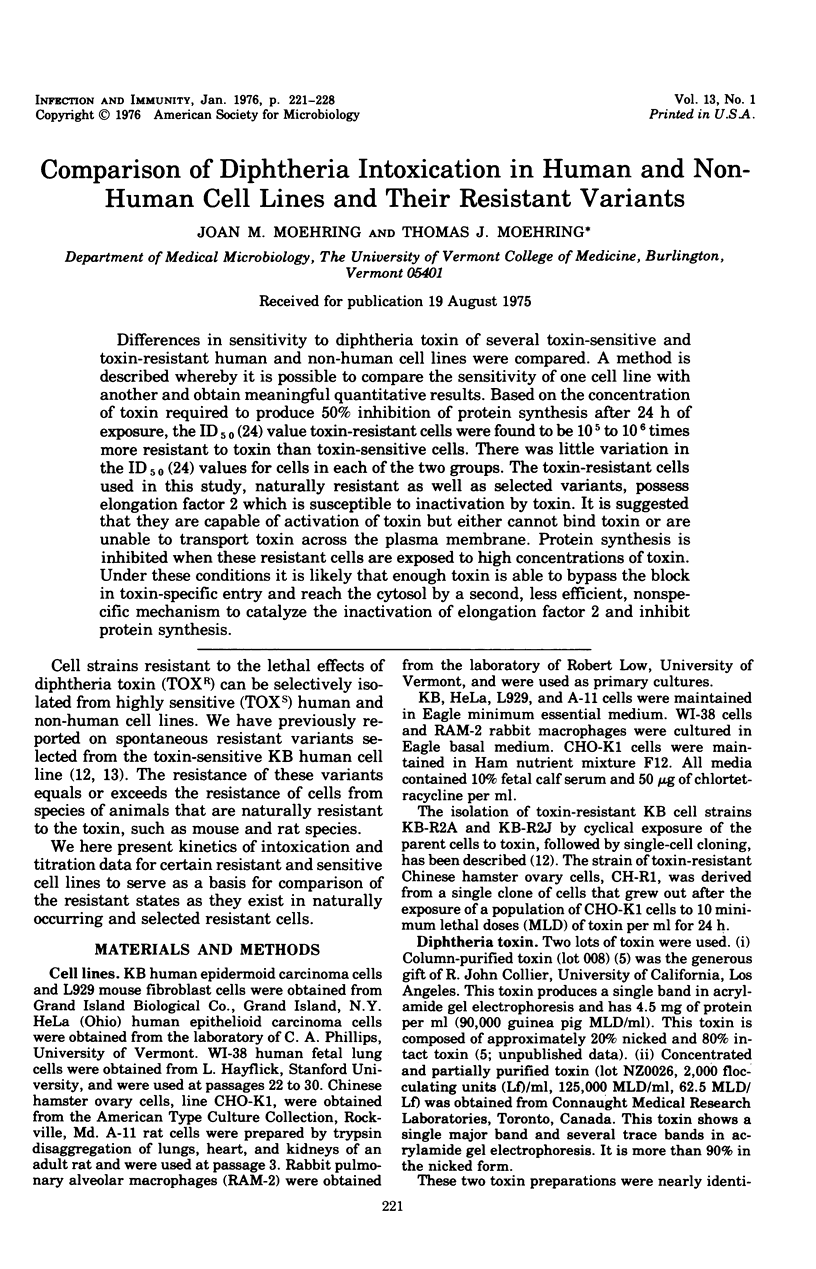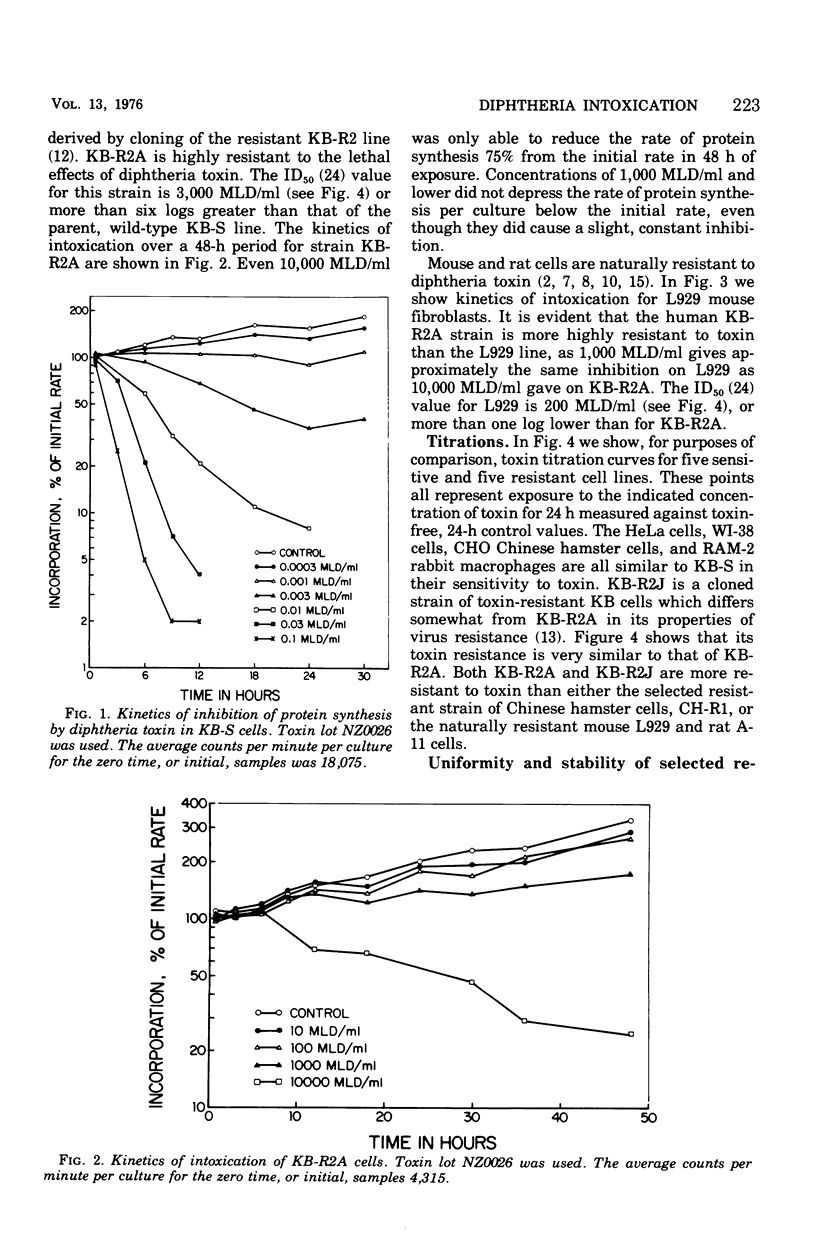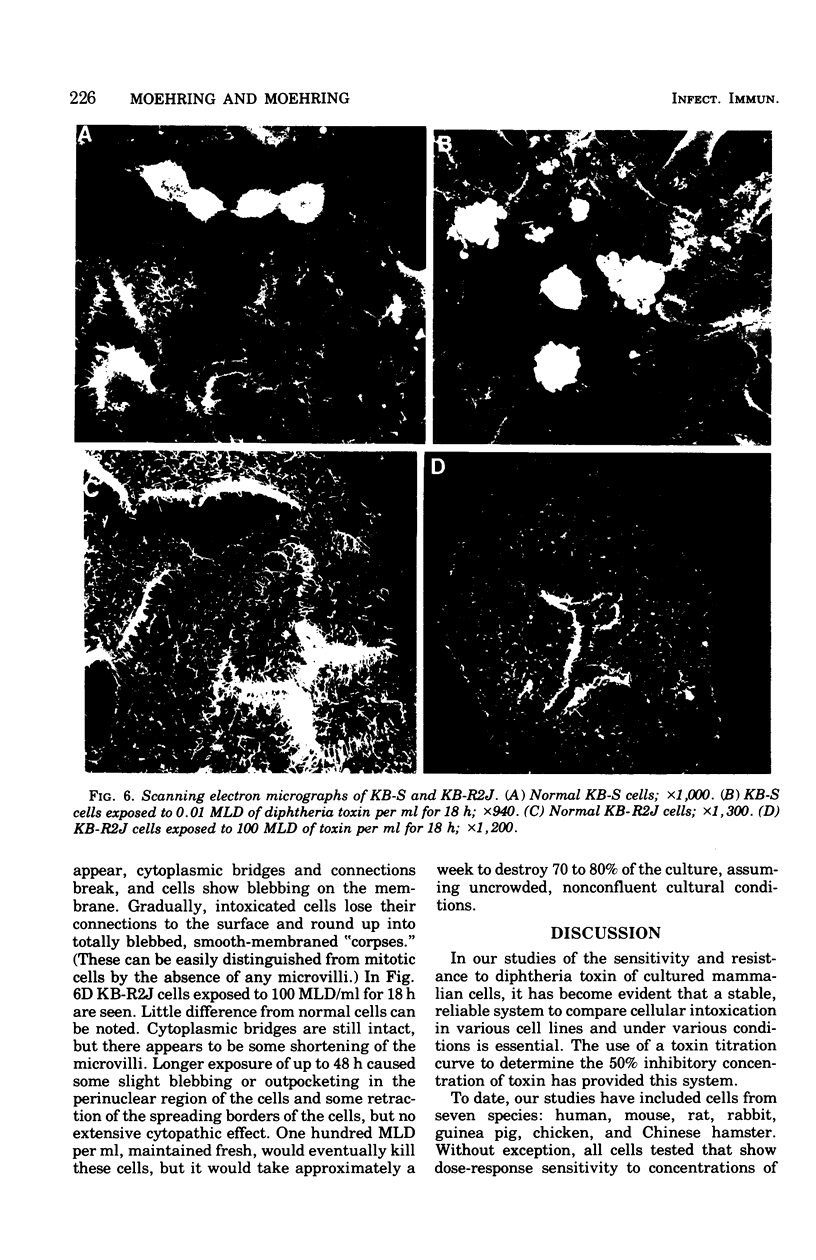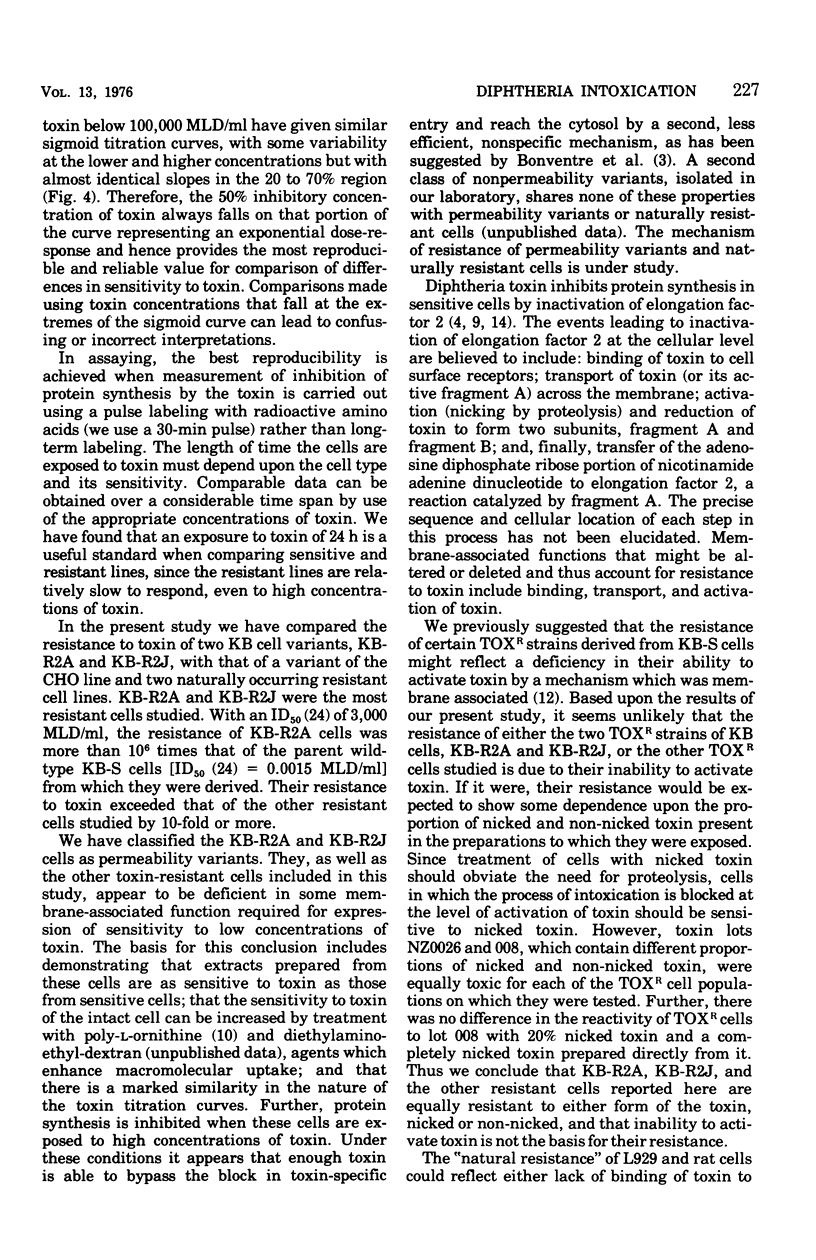Abstract
Differences in sensitivity to diphtheria toxin of several toxin-sensitive and toxin-resistant human and non-human cell lines were compared. A method is described whereby it is possible to compare the sensitivity of one cell line with another and obtain meaningful quantitative results. Based on the concentration of toxin required to produce 50% inhibition of protein synthesis after 24 h of exposure the ID50 (24) value toxin-resistant cells were found to be 105 to 106 times more resistant to toxin than toxin-sensitive cells. There was little variation in the ID50 (24) values for cells in each of the two groups. The toxin-resistant cells used in this study, naturally resistant as well as selected variants, possess elongation factor 2 which is susceptible to inactivation by toxin. It is suggested that they are capable of activation of toxin but either cannot bind toxin or are unable to transport toxin across the plasma membrane. Protein synthesis is inhibited when these resistant cells are exposed to high concentrations of toxin. Under these conditions it is likely that enough toxin is able to bypass the block in toxin-specific entry and reach the cytosol by a second, less efficient, nonspecific mechanism to catalyze the inactivation of elongation factor 2 and inhibit protein synthesis.
Full text
PDF







Images in this article
Selected References
These references are in PubMed. This may not be the complete list of references from this article.
- Bonventre P. F., Imhoff J. G. Studies on the mode of action of diphtheria toxin. II. Protein synthesis in primary heart cell cultures. J Exp Med. 1967 Dec 1;126(6):1079–1086. doi: 10.1084/jem.126.6.1079. [DOI] [PMC free article] [PubMed] [Google Scholar]
- Bonventre P. F., Saelinger C. B., Ivins B., Woscinski C., Amorini M. Interaction of cultured mammalian cells with [125I] diphtheria toxin. Infect Immun. 1975 Apr;11(4):675–684. doi: 10.1128/iai.11.4.675-684.1975. [DOI] [PMC free article] [PubMed] [Google Scholar]
- Collier R. J. Diphtheria toxin: mode of action and structure. Bacteriol Rev. 1975 Mar;39(1):54–85. doi: 10.1128/br.39.1.54-85.1975. [DOI] [PMC free article] [PubMed] [Google Scholar]
- Collier R. J., Kandel J. Structure and activity of diphtheria toxin. I. Thiol-dependent dissociation of a fraction of toxin into enzymically active and inactive fragments. J Biol Chem. 1971 Mar 10;246(5):1496–1503. [PubMed] [Google Scholar]
- Drazin R., Kandel J., Collier R. J. Structure and activity of diphtheria toxin. II. Attack by trypsin at a specific site within the intact toxin molecule. J Biol Chem. 1971 Mar 10;246(5):1504–1510. [PubMed] [Google Scholar]
- GABLIKS J., SOLOTOROVSKY M. Cell culture reactivity to diphtheria, Staphylococcus, tetanus and Escherichia coli toxins. J Immunol. 1962 Apr;88:505–512. [PubMed] [Google Scholar]
- Gabliks J., Falconer M. Interaction of diphtheria toxin with cell cultures from susceptibile and resistant animals. J Exp Med. 1966 Apr 1;123(4):723–732. doi: 10.1084/jem.123.4.723. [DOI] [PMC free article] [PubMed] [Google Scholar]
- Gill D. M., Pappenheimer A. M., Jr, Uchida T. Diphtheria toxin, protein synthesis, and the cell. Fed Proc. 1973 Apr;32(4):1508–1515. [PubMed] [Google Scholar]
- Moehring J. M., Moehring T. J. The response of cultured mammalian cells to diphtheria toxin. II. The resistant cell: enhancement of toxin action by poly-L-ornithine. J Exp Med. 1968 Mar 1;127(3):541–554. doi: 10.1084/jem.127.3.541. [DOI] [PMC free article] [PubMed] [Google Scholar]
- Moehring T. J., Moehring J. M. Response of cultured mammalian cells to diphtheria toxin. 3. Inhibition of protein synthesis studied at the subcellular level. J Bacteriol. 1968 Jul;96(1):61–69. doi: 10.1128/jb.96.1.61-69.1968. [DOI] [PMC free article] [PubMed] [Google Scholar]
- Moehring T. J., Moehring J. M. Response of cultured mammalian cells to diphtheria toxin. IV. Isolation of KB cells resistant to diphtheria toxin. Infect Immun. 1972 Oct;6(4):487–492. doi: 10.1128/iai.6.4.487-492.1972. [DOI] [PMC free article] [PubMed] [Google Scholar]
- Moehring T. J., Moehring J. M. Response of cultured mammalian cells to diphtheria toxin. V. Concurrent resistance to ribonucleic acid viruses in diphtheria toxin-resistant KB cell strains. Infect Immun. 1972 Oct;6(4):493–500. doi: 10.1128/iai.6.4.493-500.1972. [DOI] [PMC free article] [PubMed] [Google Scholar]
- Pappenheimer A. M., Jr, Gill D. M. Diphtheria. Science. 1973 Oct 26;182(4110):353–358. doi: 10.1126/science.182.4110.353. [DOI] [PubMed] [Google Scholar]
- Weber K., Osborn M. The reliability of molecular weight determinations by dodecyl sulfate-polyacrylamide gel electrophoresis. J Biol Chem. 1969 Aug 25;244(16):4406–4412. [PubMed] [Google Scholar]



